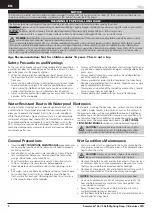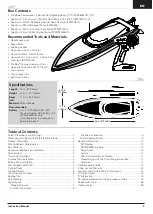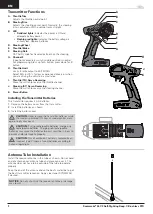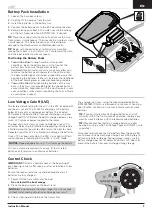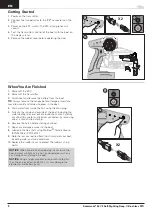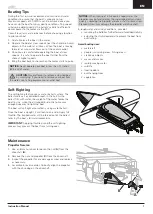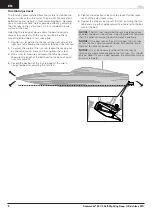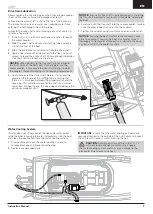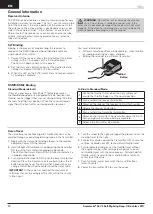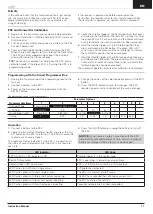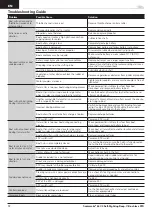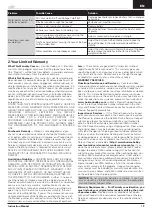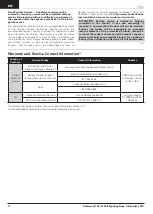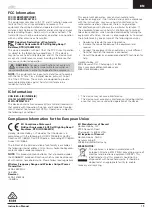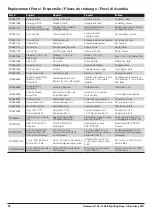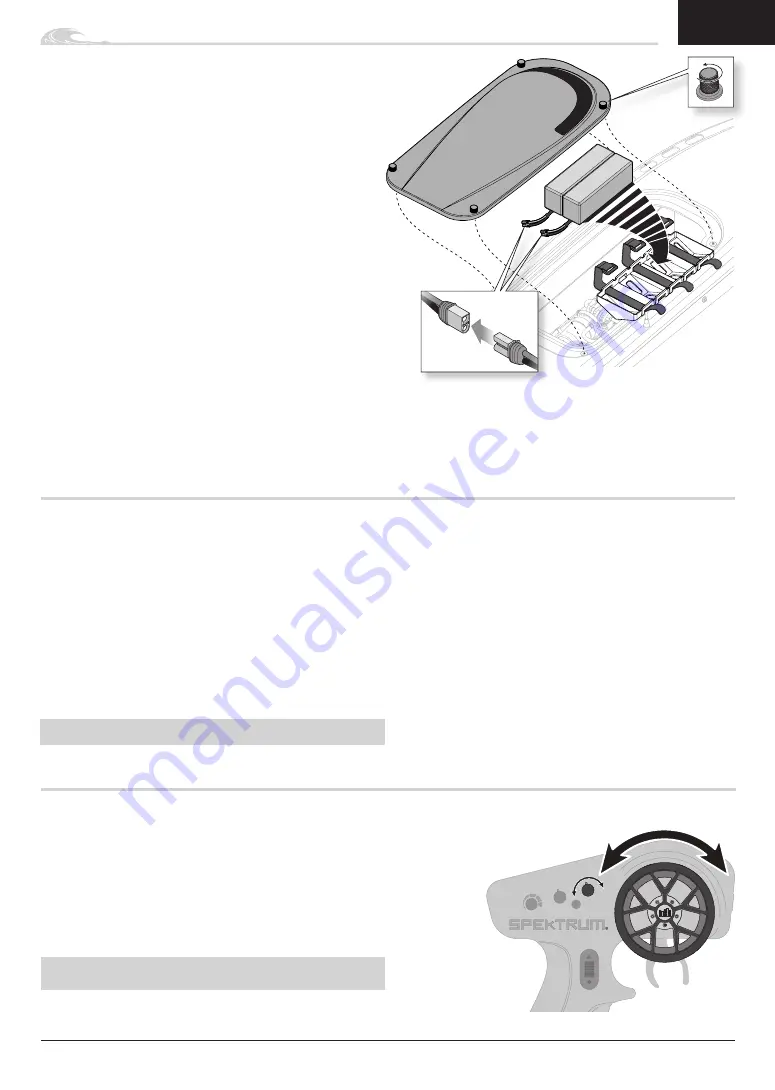
Instruction Manual
Low Voltage Cutoff (LVC)
The factory default setting for the LVC in the ESC included with
your boat is set at 3.2V per cell. Discharging a Li-Po battery
below 3V per cell may damage your battery. The included
ESC protects the boat battery from over-discharge using Low
Voltage Cutoff (LVC). Before the battery charge decreases too
much, LVC removes power supplied to the motor.
The boat drastically slows or stops completely once LVC is
activated. Releasing the throttle and reapplying it will provide
a limited amount of power to safely return the boat to shore.
Repeated use after LVC is activated will damage the batteries.
Once LVC has been activated, the ESC status light will flash
red continuously indicating that the ESC is in LVC mode.
NOTICE:
Repeated operation to LVC will damage the battery.
LVC can activate prematurely if you use (1) low C-rated
batteries or (2) old, worn, and/or weak batteries.
The average run time—using the recommended batteries
(SPMX50003S100H5)—is between 3–4 minutes at non-stop,
open throttle. Limited run time may indicate worn or weak
batteries.
TIP:
If you’ve installed freshly charged batteries, and LVC
activates within the first minute of operation, replace your
worn or weak batteries with the recommended batteries.
TIP:
Monitor your boat battery’s voltage before and after
boating by using a Li-Po Cell Voltage Checker (DYN4071, sold
separately).
Disconnect and remove the Li-Po battery from the boat after
use to prevent trickle discharge. Charge your Li-Po battery to
half capacity before storage. During storage, make sure the
battery charge does not fall below 3V per cell. LVC does not
prevent the battery from over-discharge during storage.
Control Check
IMPORTANT:
Perform a control check at the beginning of
each boating session, after repair, or after installation of new
batteries.
Ensure the receiver antenna is extended properly and all
batteries are fully charged.
1.
Power ON the transmitter and the boat.
Do not install the boat canopy.
2.
Place the boat securely on the boat stand.
NOTICE:
Do not operate the motor longer than 20 seconds
without water-cooling circulation or damage may result.
3.
Check steering and throttle on the transmitter.
S/R
STATUS
TH
ST
B
A
5
EN
Battery Pack Installation
1.
Loosen the 4 canopy screws.
2.
Carefully lift the canopy from the hull.
3.
Install the batteries in the battery tray.
4.
Connect the battery packs to the ESC power connectors.
5.
Before placing your boat in the water, secure the canopy
on the hull. Apply clear tape (DYNM0102), if desired.
TIP:
Place the canopy flat onto the hull and secure the two
front screws simultaneously. Then secure the two rear screws
simultaneously. This helps prevent cross threading and
damage to the thumbscrews and/or threaded inserts.
TIP:
Begin with the batteries as far forward as possible,
moving them back ½ inch (13mm) at a time toward the stern
until the boat reaches maximum speed.
Positioning the Battery Packs
• Toward the Bow:
In rough water or strong wind
conditions, place the battery packs at the front of the
battery trays to ensure the greatest stability.
• Centered:
Smooth water and calm winds may allow you
to move the battery packs rear-ward in the hull to allow
the bow to ride higher and increase speed. Be aware that
positioning the batteries farther aft increases the likelihood
of the boat blowing over at speed or becoming unstable.
• Toward the Stern:
Positioning the batteries all the way
back in their trays may provide higher top speeds but can
cause instability. Experiment with this position only in very
calm conditions while closely monitoring the hull’s attitude
as you increase speed.


